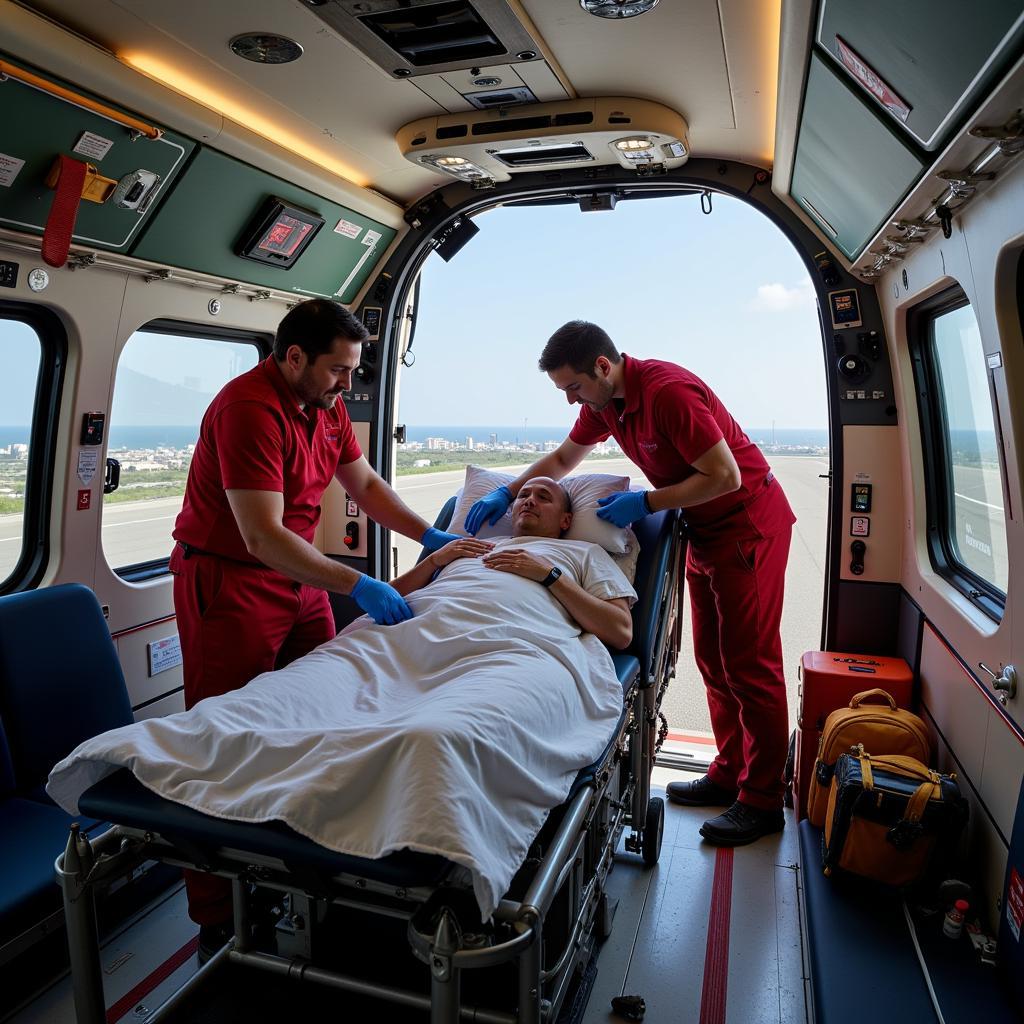Being airlifted to a hospital might sound like something out of a movie, but it’s a reality for many individuals facing critical medical situations. This rapid transport method can mean the difference between life and death, especially when time is of the essence.
Understanding the Need for Air Medical Transport
There are various scenarios where being airlifted to a hospital becomes necessary. These situations often involve:
- Trauma: Severe injuries from accidents, falls, or violence often require immediate specialized care that is best accessed through airlift.
- Heart Attacks and Strokes: These time-sensitive conditions benefit greatly from the speed of air transport, allowing for quicker intervention and treatment.
- Severe Burns: Patients with large or complex burns need specialized care in dedicated burn centers, often located in larger hospitals accessible by air.
- Remote Locations: When someone is injured or falls ill in a geographically isolated area, airlifting is often the fastest and most efficient way to reach a hospital equipped to handle the situation.
The Benefits of Air Medical Transport: A Closer Look
The primary advantage of being airlifted to a hospital is speed. Air ambulances can bypass traffic congestion and road closures, dramatically reducing transport time and potentially improving patient outcomes. This is crucial in situations where every minute counts.
Beyond speed, air medical transport provides accessibility. Helicopters can reach areas inaccessible by ground ambulance, such as remote locations, accident scenes in challenging terrain, or areas struck by natural disasters.
What to Expect During an Air Medical Transport
 Inside Air Ambulance – Medical Team Treating Patient
Inside Air Ambulance – Medical Team Treating Patient
While each situation is unique, the process of being airlifted to a hospital generally involves the following:
- Dispatch and Assessment: Trained medical professionals, often in communication with on-scene first responders, determine the necessity of air medical transport.
- Helicopter Arrival and Patient Loading: The air ambulance arrives at the scene, and the medical crew carefully loads the patient onto the aircraft.
- In-Flight Care: During transport, the patient receives continuous monitoring and treatment from the specialized medical team on board the aircraft.
- Hospital Arrival and Transfer: The helicopter lands at the receiving hospital, usually at a designated helipad, and the patient is swiftly transferred to the appropriate medical unit.
Airlift to Hospital: Addressing Common Concerns
It’s natural to have questions and concerns about air medical transport. Here are answers to some frequently asked questions:
- Who makes the decision to airlift a patient? This decision is typically made by trained medical professionals based on the severity of the situation and the patient’s condition.
- What kind of medical equipment is available in an air ambulance? Air ambulances are equipped with advanced medical equipment similar to that found in an ICU, including ventilators, cardiac monitors, and medications.
- Will I be accompanied by a family member during the flight? Due to space limitations and the critical nature of air medical transport, family members typically cannot accompany the patient. However, hospitals often provide support and updates to families throughout the process.
Seeking Immediate Medical Attention
Air medical transport plays a vital role in delivering timely and life-saving care in emergency situations. While the experience can be intense, understanding the process and benefits can provide valuable reassurance during a critical time.
Remember, if you or someone you know requires immediate medical attention, always call emergency services without delay.
 using WordPress and
using WordPress and